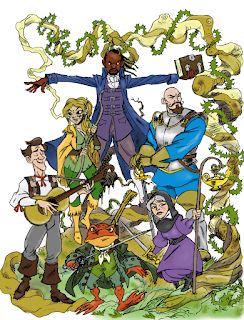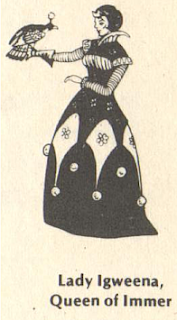I'm reading DC Comics' output from January 1980 (cover date) to Crisis! This week, I start my second year (cover date-wise). I'm looking at the comics at newsstands on the week of October 9, 1980.

Batman #331: Wolfman and Fleisher team-up on the writing credits (Fleisher is credited as "scripter." Maybe Wolfman is spreading himself thin?) with workmanlike Novick pencils. A lethal vigilante, The Electrocutioner, stalks the streets of Gotham killing criminals that got off on a "technicality" which there seemed to be a lot of in 80s media. These days, we tend to think of that as "due process" and "civil rights." Anyway, Batman wants to stop this guy, but almost gets electrocuted the first time he tries. The next time they fight, the Electrocutioner seems to die of his own gimmick, but we get the ol' hand reaching out of the water bit, so you know he'll be back. In the midst of all that Robin just wants to talk about their relationship, because he knows Bruce is mad at him for quitting college, but Bruce just wants to catch the bad guy. When Dick discovers Bruce is letting Talia stay at his place, he blows up and storms out. Honestly, Wolfman is really trying to make this riff between the dynamic duo a thing, but at all comes off so one-sided, like Dick is just spoiling for a fight with Bruce.
The backup story by Barr and Newton, has Batman disguising himself as a cop to infiltrate the GCPD and expose a corrupt cop who may be a friend to Gordon. It turns out there is a corrupt cop, but he isn't Gordon's friend, but one of that guy's colleagues. What's interesting about this story is Barr has Batman in disguise on a police firing range unable to shoot because he has a "psychological block" against using a gun. It's odd that Barr writes this, because in 1987 he'll write the infamous "Batman: Year Two" arc where a young Batman is forced to use a gun against the Reaper. He also will write other Batman stories post-Crisis where Batman will occasionally pick up a gun. I wonder what changed his mind?

DC Comics Presents #29: Starlin brings a bit of his cosmic flourish to an encounter between Superman and the Spectre. Picking up where last issue left off, Superman is trying to find his cousin, who went flying off to who knows where at supraluminal speeds. Superman goes faster and faster until he shifts into higher planes of existence. He sees Supergirl, but then the Spectre stops him. Spectre tells Superman that the one he works for has sent him to stop the Man of Steel, but just like in the recent Martian Manhunter issue Superman takes anyone telling him to hold on a second as an invitation to fight. Not that he can do anything to the Spectre who is by now in his cosmic being mode. Superman eventually gives up, and Spectre presents Supergirl, still unconscious. He explains that Superman's actions ripping the fabric of reality and all could have destroyed whole universes. Superman has learned his lesson, and he and his cousin head home. This issue reminds me a lot of an issue of Alan Moore's Supreme, with a Starlin-esque style and a run in with a Spectre stand-in that humbled the titular character.
The backup is "What Ever Happened To..." Dr. Mid-Nite. Again, I feel like Rozakis and Saviuk just give us essentially another Dr. Mid-Nite adventure. It doesn't really live up to the title.
Flash #294: Conway pinch hits for Bates and has the Flash fighting the Pied Piper in a story lame enough that it loses the cover to the backup feature. Pied Piper is blackmailing cities by leading hordes of exotic animals (from zoos or something? I don't know) to attack unless he's paid off to "lead them away." No one can figure out how he's summoning them, but Flash eventually does and uses the Piper's own trick against him.
In the Firestorm backup, the Flash accidentally causes a sonic boom beneath Superman's flying prison, and the Atomic Skull gets loose. The Flash actually hitches a hide on a jet liner then runs across the clouds to check it out. Anyway, a blast from the Atomic Skull irradiates him, and the Flash will be a swift moving hazard unless he can find some way to get rid of it. He goes to Firestorm for help who obliges, but then gets drunk off all the nuclear energy. The Flash has got to manage drunk Firestorm to get him to take out the Atomic Skull. It's goofy enough for a Bob Haney yarn, but it's just more Conway.

Ghosts #96: Doctor Thirteen keeps ghostbreakin' in a story by Kupperberg and Adams. An air show is apparently haunted by the ghost of a WWI pilot, but when a vintage biplane with no one at the controls shoots down another plane, killing the pilot, Thirteen is on the case. It turns out it's a guy with a remote control device and an overly complicated plan, hoping to crash the plane into an office to destroy records of his embezzlement. See, there's no such thing as ghosts!
Meanwhile, the rest of the comic is full of ghosts. Kashdan and Henson have two stories this issue. The first involves a criminal who can't escape from a train because the engineer he killed still has his ghostly foot on the deadman's clutch until the train arrives at the prison. In "The Phantom Strangler" a buffalo poacher is smothered to death inside the buffalo carcass he's sleeping in overnight by the ghost of the man he killed. Finally, Allikas and Landgraf reveal "Dread of the Deadly Domestic" which is really a cautionary tale about not taking a reference for a housekeeper from the sister of your dead wife who thinks your a murderer. While Rodney's away in Europe, the new zombie-like housekeeper with fuchsia hair terrorizes his wife who becomes convinced the maid's the ghost of Rodney's former wife. Rodney returns form Europe just in time to reveal it was all a ruse and the housekeeper is actually his former sister-in-law doing some sort of Scooby-Doo-esque scaring. How has Rodney deduced all this? Twist! His plane went down over the Atlantic, and he's a ghost. The ghost of his former wife told him.
Jonah Hex #44: The story continues from last issue, with Hart and Hex having escaped the Apaches, but now facing the Spast Brothers. The Brothers crease Hart's scalp, knocking him out, and Hex gets shot in the shoulder. They make it to the river where they hide out until the Spasts are gone. Hex takes Hart to a farm house to heal while he sets out to clear his name. Mei Ling, meanwhile, has recuperated and gone to a saloon to try to find Hex, only to find the Spast Brothers. Hex shows up and guns them all down when they threaten his girl. Back at the farm, Hart reads the message Hex left for him, then helps the family fight off an attack by the bandits sent to run them off by the land-grabbing, wealthy cabal in town. That cabal hears that Hex is still alive when he and Hart appear to be facing off in the street. Hex outdraws the marshall, then goes to negotiate with the businessmen. They confirm his suspicions about their misdeeds and offer to cut him in if he'll finish running off the homesteaders. Marshall Hart, very much alive, has heard their confession and arrests them. He and Hex had planned a ruse to flush them out. DeZuniga joins as inker here. He'll be on this title for quite some time.
Next issue, Hex is to be married to Mei Ling. I'm sure that will go off with no problems.
G.I. Combat #225: As usual, there are two Haunted Tanks stories written by Kanigher with art by Glanzman and Ayers. The first is the best of the two, with the tank crawling through a cave on the lookout for a secret weapons cache, which Prussian military officers plan to use to start another world war after Hitler's inevitable defeat. Thankfully, the cave has tunnels big enough for the tank crew to complete their mission, and the leader of the cabal is fortuitously killed in the Allied bombing of Dresden. The second story sees the Haunted Tank damaged, without working weapons and forced to tow a Stuart tank with weapons but no functioning treads, becoming a "2 for 1 Tank." We get a flashback to the early days when the Haunted Tank first became haunted and they had another loader before Gus named Arch.
The others stories include an O.S.S. tale, where in a departure, the protagonist survives. He gets close enough to kidnap a German scientist working on chemical weapons in Italy by taking a sedative and playing a corpse in a coffin. He smuggles the scientist out of the country in the same way. Boltinoff and Matucenio deliver a perfunctory story about a glider crew in the Invasion of Normandy. Haney and Evans present a yarn about a wheelchair bound vet who deserves the Congressional Medal of Honor for his actions in the war, but nobody survived to write the report to get him one. One day, after a chance encounter with the Japanese ambassador in Washington, the soldier accompanying the ambassador reveals he was the enemy commander on that island that day and confirms the vet's story. The short yarn by Allikas and Amongo has a salty old British fisherman getting the better of a German frogman with a bucket of chum and a hungry shark.

Justice League of America #186: This issue is dedicated to Dick Dillin. Conway is again joined by Perez for the return of the Shaggy Man. Or rather return of one of the two Shaggy Men. The Shaggy Man is rampaging through Moscow and the JLA, absent their heavy-hitters have to rely on Batman's planning to stop him. After leading the Shaggy Man where they want him to go, Batman lures him onto a rocket and they blast him into space. Maybe not as epic as the New Gods arc, but I feel like Conway is getting a much better feel for the JLA now and delivering solid, Bronze Age stories.

























































